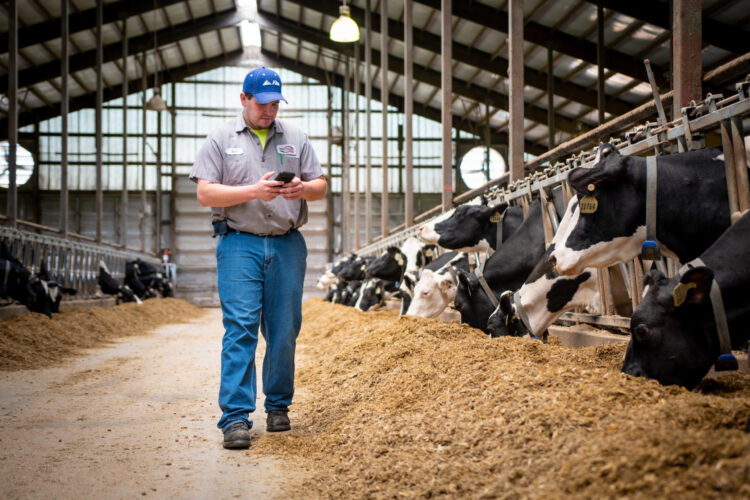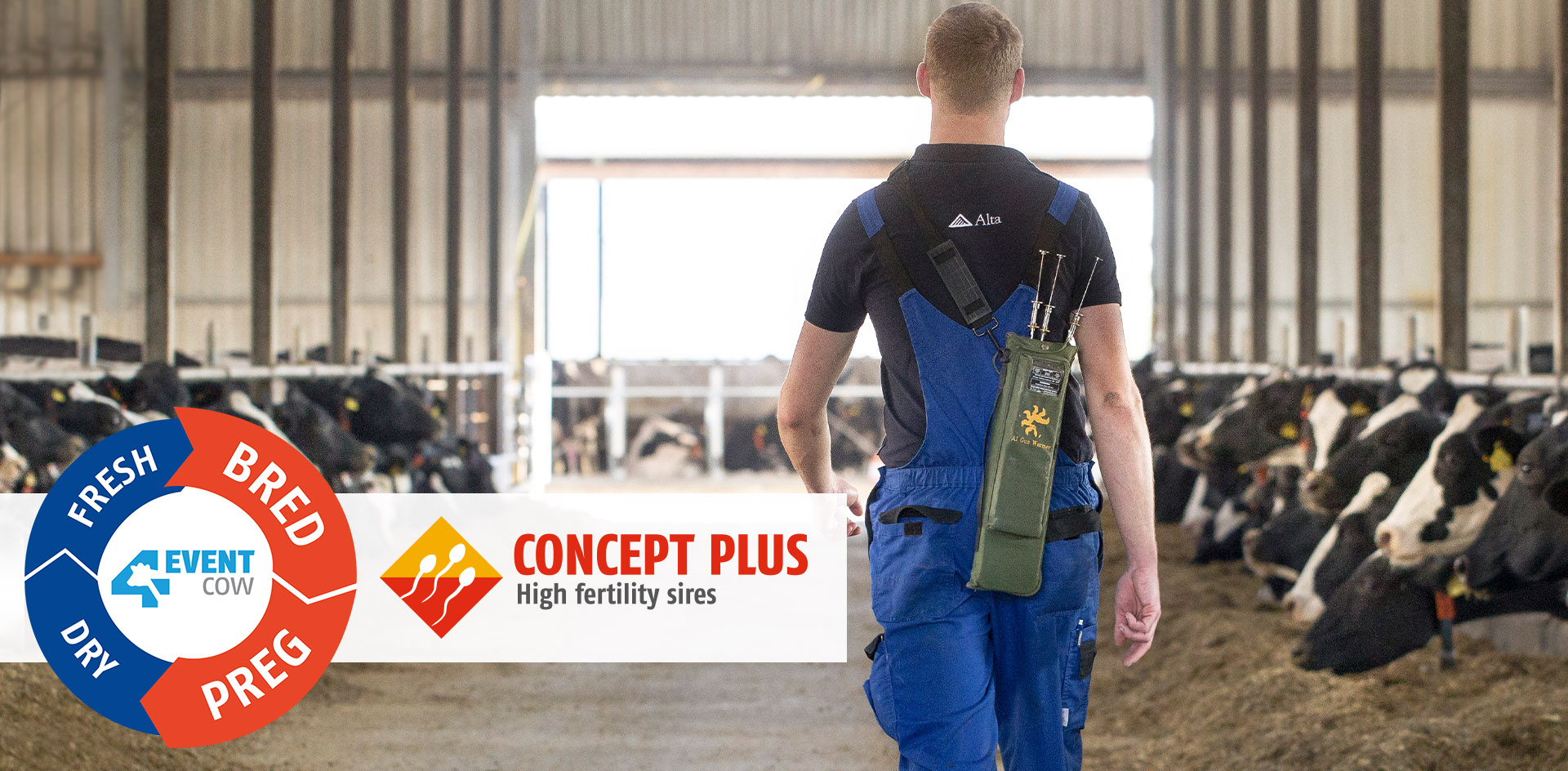Have you ever wondered how automated activity monitoring could help you not only save money, but also time on your dairy operation?
Imagine starting each day with a list of cows that need attention. You wake up and open an app on your phone, tablet or computer, and the list is waiting for you. Activity and feed intake for cows #555, 579 and 790 suddenly dropped, which could be an early sign of mastitis. Chewing activity for cows #345 and 567 has suddenly dropped, which could be early warning signs for ketosis or hypocalcemia. You can start your day with forward-looking insights like these before you step one foot out of your bed in the morning.
“Automated activity monitoring systems collect data on every cow 24/7,” says Rudy Ebbekink, marketing manager at Nedap Livestock Management, the company that developed the technology behind Alta COW WATCH. Besides heat signs and the cow’s location, Alta COW WATCH monitors eating, rumination, and inactive behavior. “The system compares live data to past data on the animal and the rest of the herd. When incoming data is different than what would be expected based on previous data, the system can send an alert to your phone or laptop for intervention.” This applies to attentions related to individual cows, but certainly also to groups.
Here are three ways activity monitoring data gives you useful information on individual cows and herd trends.
Reduce treatment time of mastitis
What if you could detect acute mastitis and other common diseases earlier? Mastitis is among the most contagious and costly diseases affecting dairy farms. In fresh cows, a case results in an average loss of $475 (406 euros or 357 pounds) and in the UK only, around one million cases of bovine mastitis occur each year, causing 200 million pounds of losses in production and treatments every year (Science Daily 2008). In the United States for example, mastitis costs dairy producers about 2 billion dollars per year. Automated activity monitoring data can help you detect early signs of disease and intervene faster, improving outcomes and preventing diseases from spreading throughout your herd.
One of the first signs of acute mastitis, for example, is lack of appetite. And, when the data indicates a sudden drop in eating and rumination time compared to cow or herd historical data, the system alerts you that the affected cow needs attention. If a cow does have acute mastitis, the health alert can help you identify and diagnose it before more obvious symptoms appear like swelling, hardness, redness, and heat.
“There are two categories of health attentions,” says Ebbekink. “One category is ‘urgent attention’ which means this cow requires immediate attention. The second category includes cows with more subtle, less sudden changes in behavior. These are the animals that you can focus on during your regular pen walks.”
Cows on health attention lists should be evaluated and sent into treatment protocols or isolation for monitoring.
Drive transition period success
Automated activity monitoring data can also provide useful insights into the transition period from 60 days pre-calving to 30 days post-calving. Cow chewing activity, including eating and rumination, can be used to detect early symptoms of ketosis and hypocalcemia. It can also help determine future reproductive success.
“Cows that eat less during the dry period and the fresh period are at higher risk of ketosis and hypocalcemia,” says Ebbekink. “When chewing activity suddenly drops, the system will generate an alert and add her to a list of cows in need of attention. And, by identifying cows with a higher probability of ketosis, you can intervene and prevent lower milk production and lost body condition throughout lactation.”
A multi-year study on transition cow activity data by Utrecht University, Wageningen University and Research Centre, and Vetvice Consultancy in the Netherlands has also uncovered benchmarks for future reproductive success. Cows with higher eating times three to four weeks after calving are ready to be bred back sooner.
If a cow isn’t eating as often as she should, you can check on her and treat her accordingly. If multiple cows in one pen are experiencing similar issues, you can evaluate your nutrition program and environment. Making the necessary adjustments can help cows get bred back sooner.
Stay ahead of feed quality issues
Mycotoxins infect up to 25% of feed crops in the world, resulting in billions in lost revenue and the loss of up to 1.1 billion tons of feed annually. And, mold and mycotoxin issues in the feed are often challenging to diagnose because visual symptoms can be vague and varied.
Automated activity monitoring data can help identify symptoms of mycotoxins, including lethargy (increased inactivity), reduced feed intake and reduced rumination. Data collected on individual cows and overall herd averages enable you to determine when an issue – like mycotoxins in feed – is affecting a group of cows or the entire herd. Alta COW WATCH triggers a group alert when a certain percentage of the cows in a group is showing abnormal behavior of any kind. Reports on the groups eating pattern as well as eating, rumination and inactivity day totals provide insight into feeding and nutrition issues and management.
“The goal of activity monitoring data is to alert you when there’s an issue before visual signs appear,” says Ebbekink. “We want to be able to pinpoint cows and groups in need of attention faster and more accurately, so that intervention can happen sooner.”




